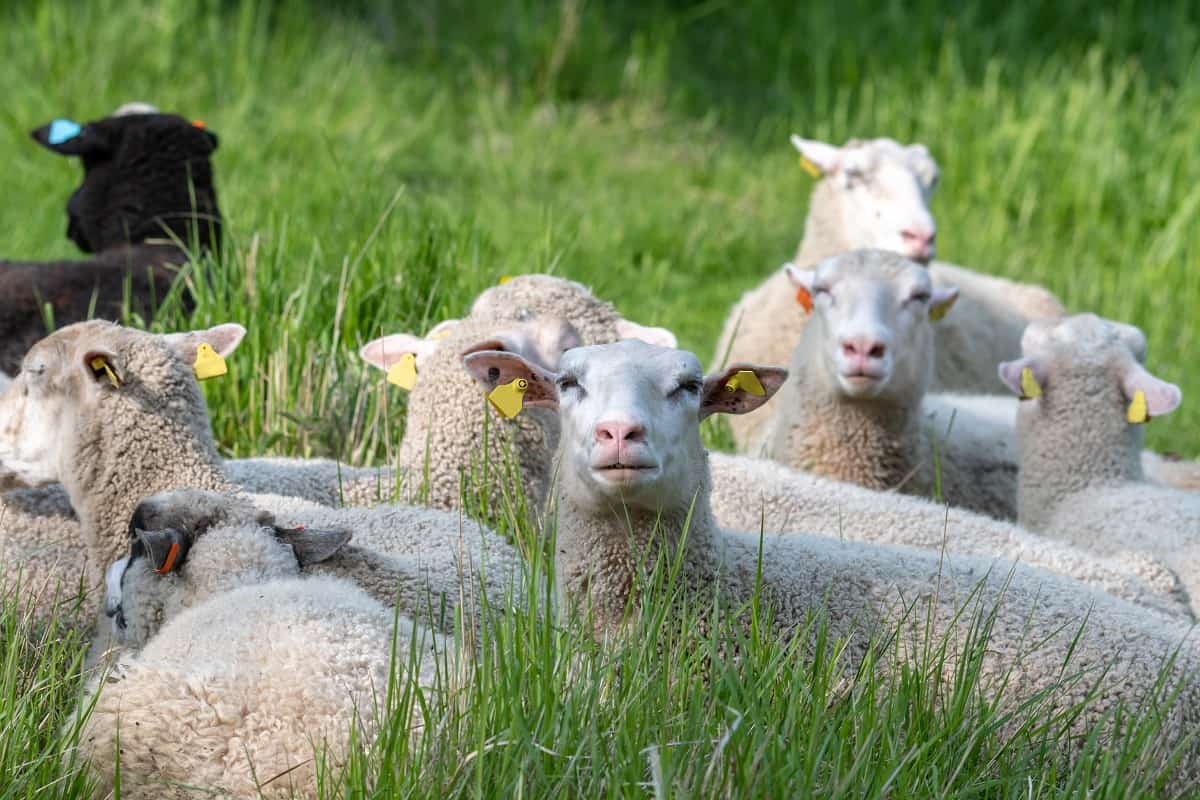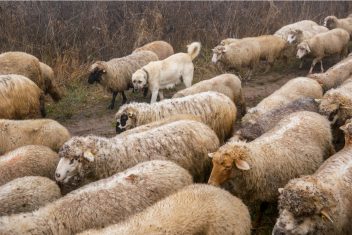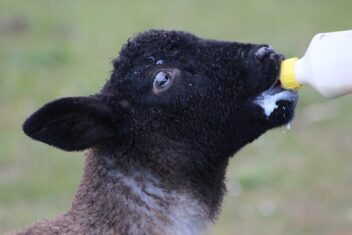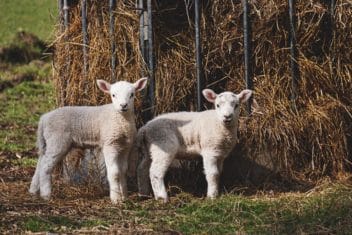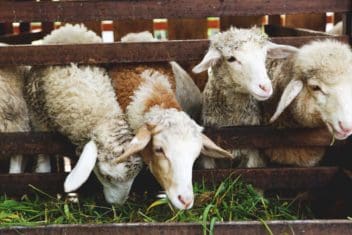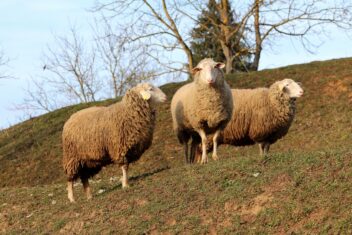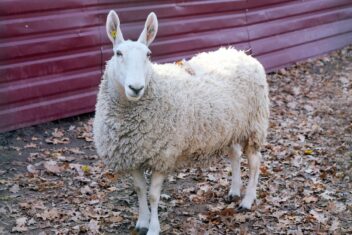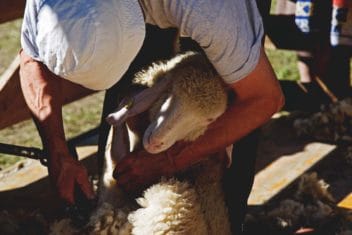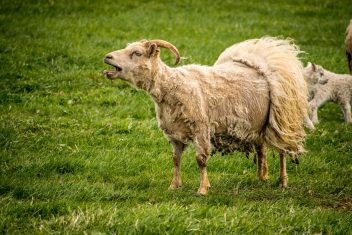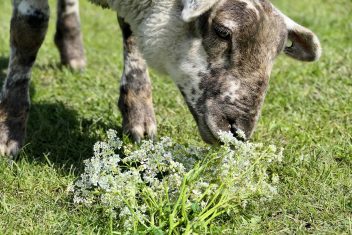Should you tag your sheep?
While there are several reasons farmers might choose not to ear tag their sheep (not having enough time or the costs associated with doing so are two major reasons), ear tagging livestock is a good idea.
Not only is ear tagging recommended by the USDA for any animals that will leave your farm (whether that’s to go to the fair, the vet’s office, or to auction), it’s a good way to help you stay organized.
Here are some tips on how to ear tag your sheep – and a few things to keep in mind.
What is Tagging?
Ear tagging is a process that involves inserting a premade ear tag (typically made out of plastic) into a sheep’s ear. It requires a specialized tool to make a clean, sanitary hole through which the ear tag is automatically inserted.
This is an important flock management practice that is inexpensive (though with a large flock of sheep it can incur a significant cost) but beneficial. It can take some time to tag an entire flock, but it will make it easier to keep track of your herd.
Most ear tags are imprinted with a number. They are often color-coded and can contain other identifying information, like the name of a farm. You can often customize your farm’s ear tags to contain any information that you might find relevant.
In addition to basic plastic clip ear tags, there are also flag-shaped ear tags in which two discs join through the ear. There are button-shaped tags, which also join through the ear, and metal ear tags. You can even buy electronic identification tags. Though more expensive, they are ideal for large farms where security is essential.
Benefits of Ear Tagging
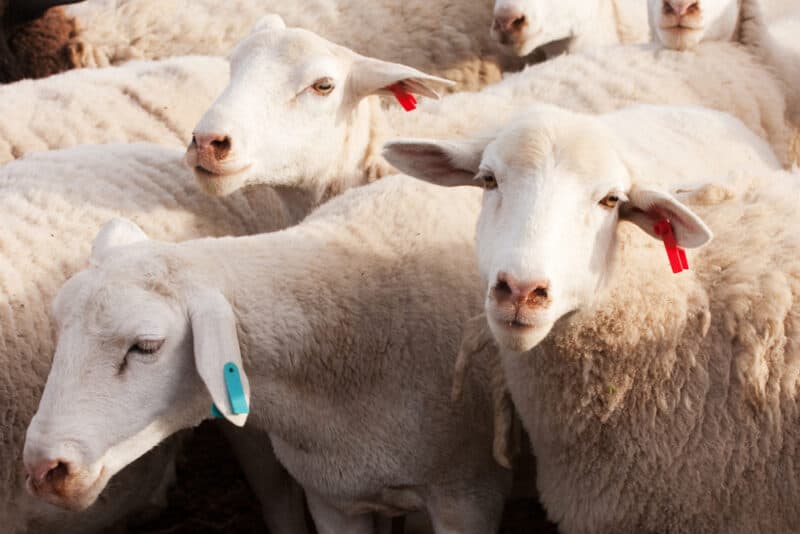
Ear tagging sheep (as well as other types of livestock) is beneficial for so many reasons.
Here’s a quick overview but know that ultimately, ear tagging’s biggest convenience is that it can help you keep your farm more organized and streamlined. When you aren’t constantly having to check records for information, you can go about your daily chores far more efficiently.
1. Indicating Sex
Sure, you can always check the sex of an animal by looking at its “parts.” However, this can be time-consuming, and sometimes, it’s impractical to “check the plumbing.” Not to mention, ear tagging will let you get this information immediately without getting your hands dirty.
You can insert the primary tag in different ears for either gender. That way, you can rapidly sort animals for breeding.
2. Determining Year of Birth
You can also use ear tags to depict the year of birth. Many farmers print the year on the ear tag or just use different colored tags for each year (or both). That way, you’ll know exactly how old an animal is without having to get up close or check teeth.
3. Noting Problems for Culling and Medicating
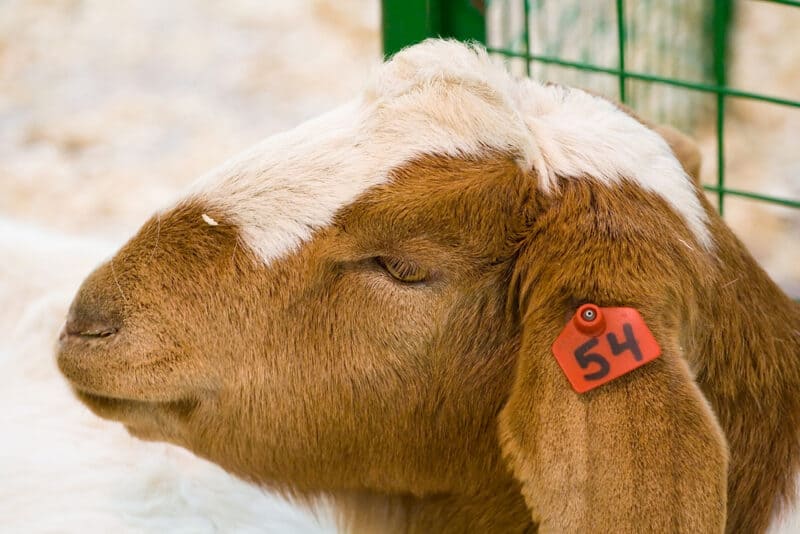
If you have animals that are known to have issues like mastitis, foot problems, prolapse, and so on, ear tagging them is a great way to indicate these problems in large herds.
Since you obviously will not know which animals are going to be problematic when you tag them at birth, you can simply insert another cull tag later on or mark the tags with a permanent marker.
4. Indicating Dam and Sire
When you’re trying to breed animals efficiently (and rule out potential breeding-related issues), indicating the sire and dam with a simple ear tagging system is smart. You can use a different colored second tag for each sire or print the name of the sire or dam on the tag of its offspring.
5. Referencing Singles, Twins, or Triplets
Finally, ear tags can be used to indicate which animals were singletons as well as those that were part of pairs or trios. This can speed things up when you’re sorting out animals to be bred or sold. No record-checking is necessary!
How to Ear Tag Sheep
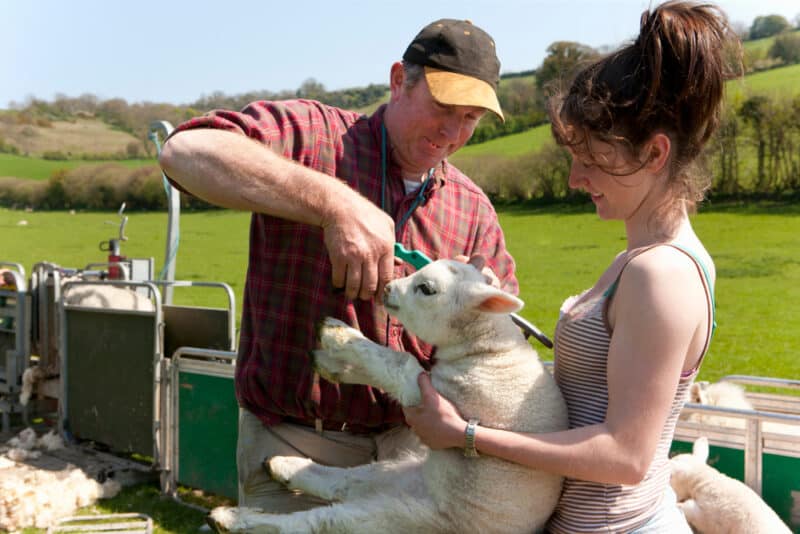
Some people are hesitant to ear tag their sheep, assuming it will cause their animals a great deal of discomfort. When done correctly, though, this process is no more painful than piercing your ears.
1. Educate Yourself on Timing and Placement
Ear tag young lambs for the best (least painful) results.
When you tag, place the ear tag no more than 2-inches from the base of the ear. Going too far away from the head will make it more likely that the sheep will tear the tag on fencing. It can also cause the ear to droop from the excess weight (though it’s important to note that it is very common for the ears of young lambs to droop when they are tagged, regardless of the spacing).
Also, take note of the vein that runs down the center of the ear. Put the tag either above or below the vein. It should be below the vein if you are showing your sheep in exhibitions.
You can use ear tags of any size, color, and number, and you can place tags in any ear. Just be consistent.
When choosing the proper size, know that larger tags are easier to see from a distance, but you may have to wait longer to tag your lambs. You can always re-tag with a larger tag later to prevent young sheep from catching them on fencing or brush.
Finally, try to apply ear tags when it’s warm, if possible. This will make it easier for the plastic to be pushed through the ear since it’s more pliable in warm weather. If you must tag in the cold, keep the tags in a bucket of warm water until you’re ready to use them.
2. Decide on a System
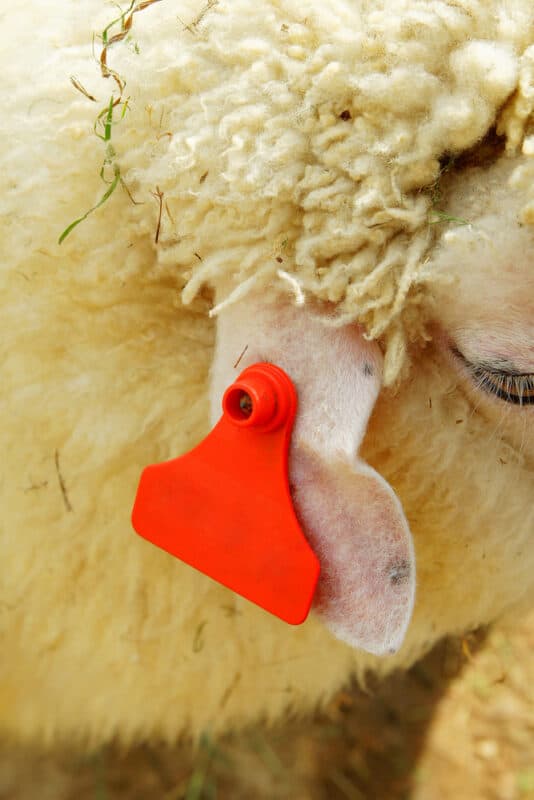
I gave you a few ideas for potential tagging systems above – but feel free to come up with your own. As long as you stick to the system, it doesn’t matter what kind of methods you choose.
3. Prepare the Tagger
You’ll need a specialized tool to apply the tags to your sheep’s ears. This looks like a large pair of pliers with a thin needle on one side and a spring-loaded clip on the other. This will let you center the female end and release it once the tag is securely in the ear.
Make sure your ear tagger is compatible with the type of tags you’ve purchased (most stores sell these together). Ensure that it’s sterilized and you know how to use it before you get started.
4. Insert and Align the Tag
Put the female end of the ear tag underneath the spring-loaded clip of your tagger. Then, slide the male side of the tag onto the needle end.
Align the hole in the female side of the tag with the male side. Disinfect both the tag and tagger once more before you get started.
5. Position the Tag on the Ear

Get the ear tagger on the ear with the tag in the proper position. Double-check to make sure it’s where you want it to be.
A side note – it can be helpful to have a second person working with you on this task. Even if you’re tagging smaller, lighter lambs, they can be squirmy and difficult to hold, which can increase the likelihood of making a mistake or slipping.
6. Squeeze and Release
Squeeze the trigger of the ear tagger to pierce the ear. The ear tag should be applied! Press the clip on the tagger to release the ear tag, make sure it’s in the proper position, and ensure that there is no bleeding.
The insertion site shouldn’t bleed if you did the tagging correctly – but if you notice any blood, simply spray it with some Blu-Kote or Red-Kote (or a similar wound-stopping spray) to make sure your animal does not get infected.
Release the sheep and monitor the tagging site for the next few days. That’s all there is to it!
Ear Tag When Your Sheep Are Young
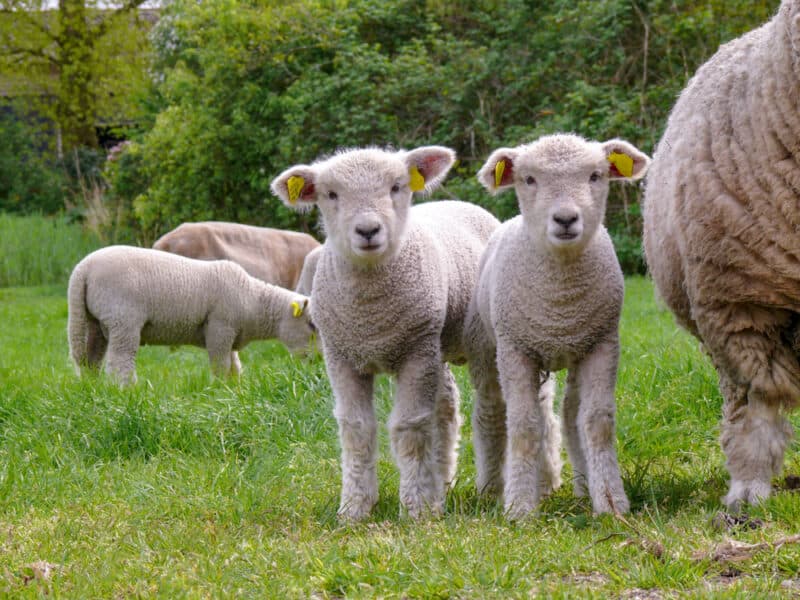
Ear tags can help you keep track of your animals without too much confusion. Whether you’re trying to identify animals based on their parentage, sex, or year of birth, using tags is a smart choice.
Of course, this is something you’ll need to commit to when your animals are young. Ear tag wounds in young lambs heal much faster than those in older animals (and with less risk of infection). Even if the smaller tag eventually becomes less useful or falls out, you’ll have a clean hole where you can install a larger tag later on.
Consider these tips for ear tagging your sheep – it’s a smart way to stay organized on the farm!
